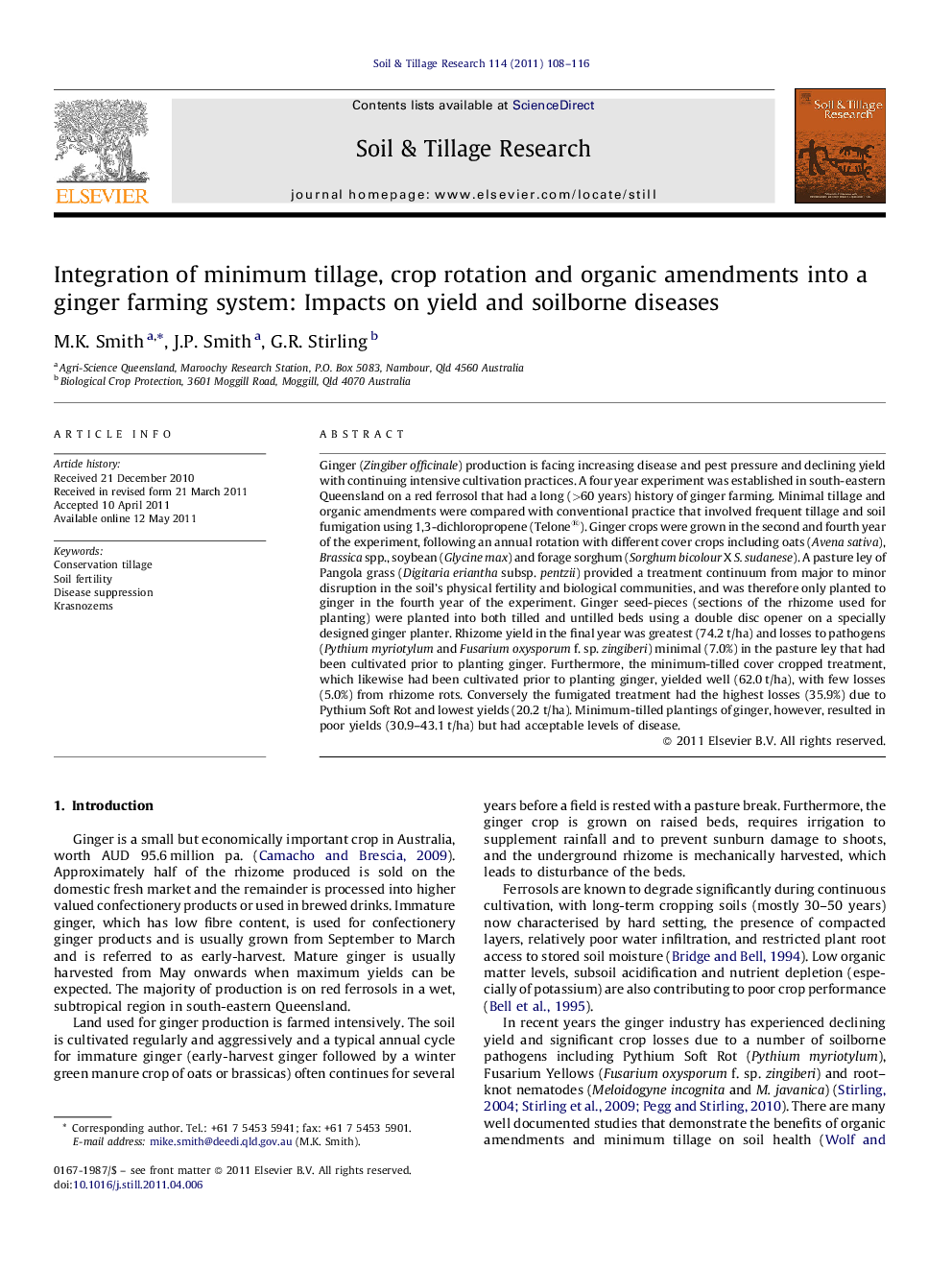| کد مقاله | کد نشریه | سال انتشار | مقاله انگلیسی | نسخه تمام متن |
|---|---|---|---|---|
| 306087 | 513071 | 2011 | 9 صفحه PDF | دانلود رایگان |

Ginger (Zingiber officinale) production is facing increasing disease and pest pressure and declining yield with continuing intensive cultivation practices. A four year experiment was established in south-eastern Queensland on a red ferrosol that had a long (>60 years) history of ginger farming. Minimal tillage and organic amendments were compared with conventional practice that involved frequent tillage and soil fumigation using 1,3-dichloropropene (Telone®). Ginger crops were grown in the second and fourth year of the experiment, following an annual rotation with different cover crops including oats (Avena sativa), Brassica spp., soybean (Glycine max) and forage sorghum (Sorghum bicolour X S. sudanese). A pasture ley of Pangola grass (Digitaria eriantha subsp. pentzii) provided a treatment continuum from major to minor disruption in the soil's physical fertility and biological communities, and was therefore only planted to ginger in the fourth year of the experiment. Ginger seed-pieces (sections of the rhizome used for planting) were planted into both tilled and untilled beds using a double disc opener on a specially designed ginger planter. Rhizome yield in the final year was greatest (74.2 t/ha) and losses to pathogens (Pythium myriotylum and Fusarium oxysporum f. sp. zingiberi) minimal (7.0%) in the pasture ley that had been cultivated prior to planting ginger. Furthermore, the minimum-tilled cover cropped treatment, which likewise had been cultivated prior to planting ginger, yielded well (62.0 t/ha), with few losses (5.0%) from rhizome rots. Conversely the fumigated treatment had the highest losses (35.9%) due to Pythium Soft Rot and lowest yields (20.2 t/ha). Minimum-tilled plantings of ginger, however, resulted in poor yields (30.9–43.1 t/ha) but had acceptable levels of disease.
► Reduced tillage and inputs of organic matter improve ginger yield.
► Reduced tillage and inputs of organic matter limit losses due to soilborne pathogens.
► Soils can be managed to enhance suppressiveness to Pythium Soft Rot in ginger.
► Red ferrosols can be rehabilitated with pasture leys and minimum tillage.
Journal: Soil and Tillage Research - Volume 114, Issue 2, August 2011, Pages 108–116